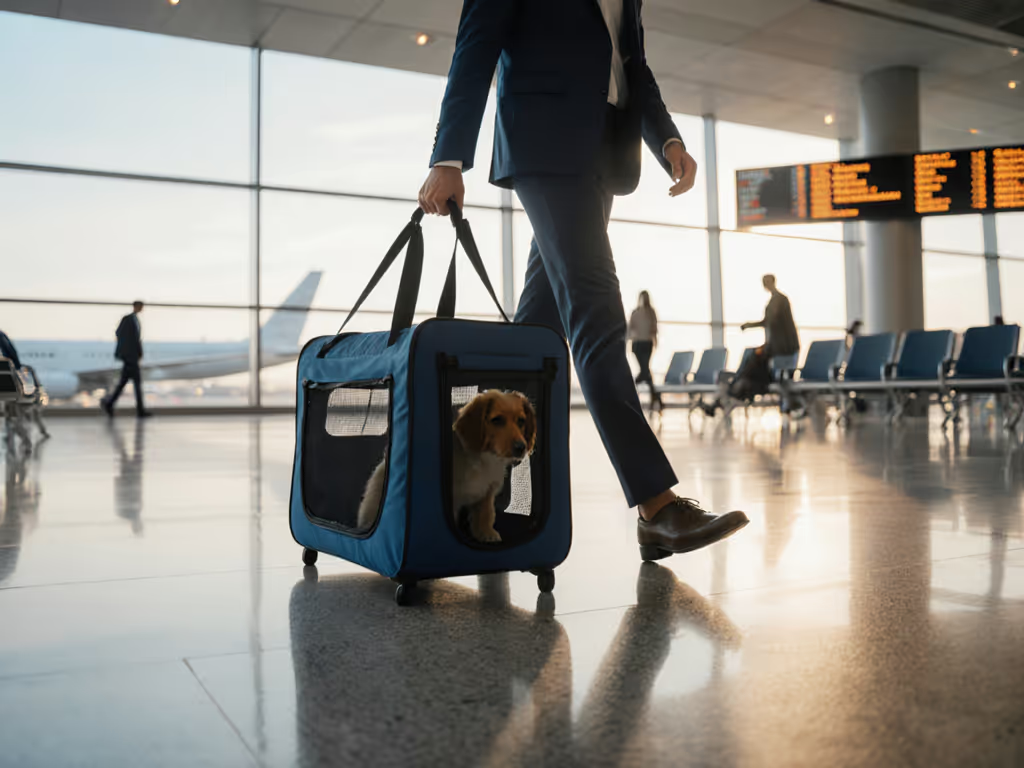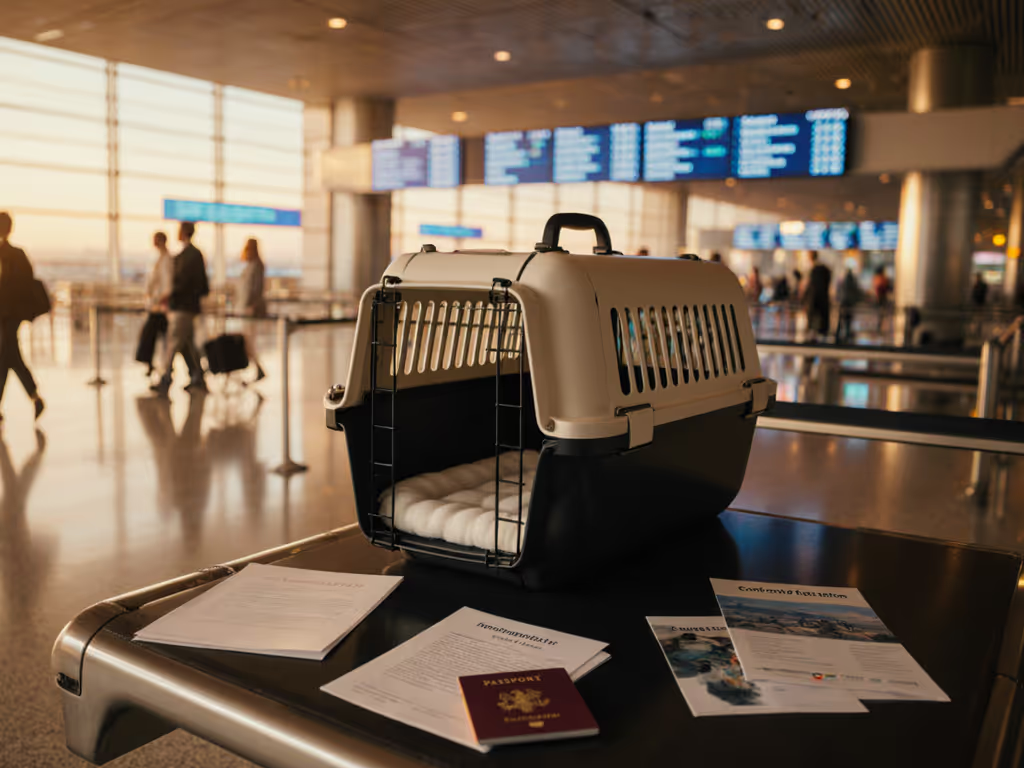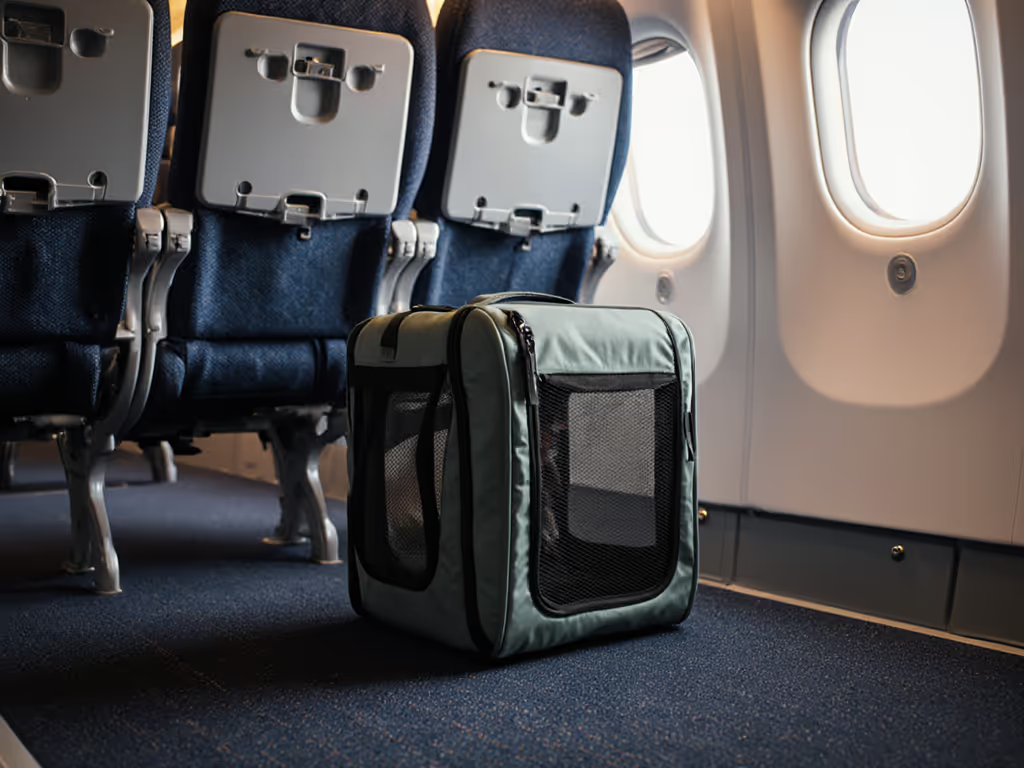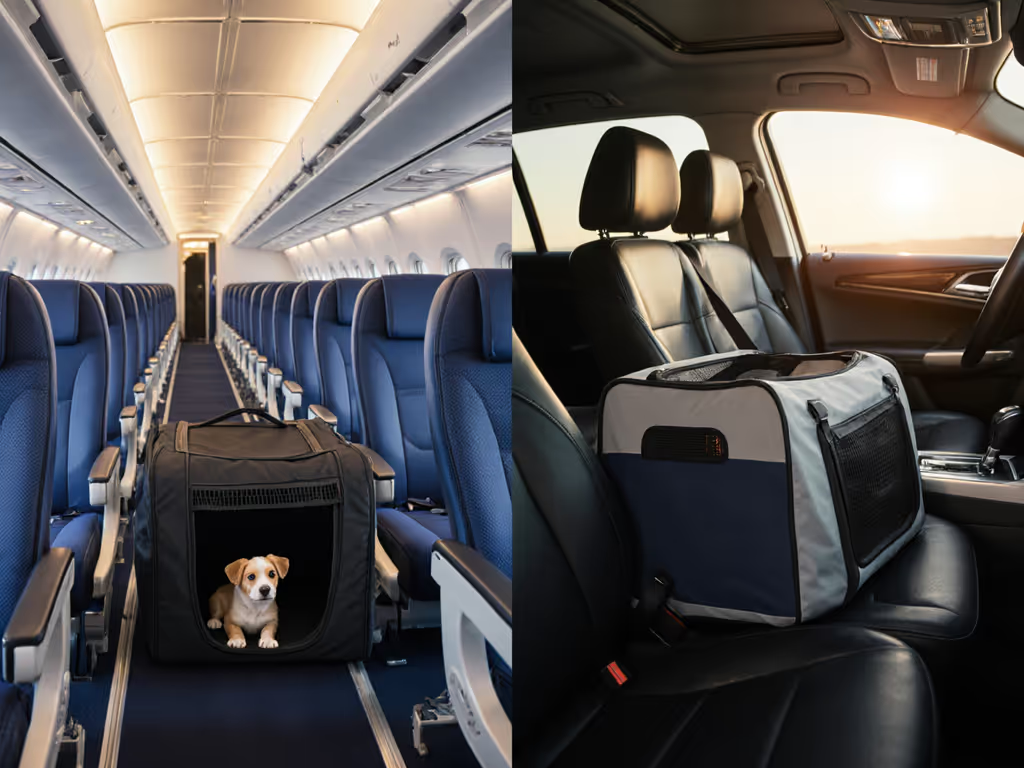
IATA Pet Carrier Requirements by Country

When navigating international skies with your pet, understanding the International Air Transport Association pet carrier regulations isn't just paperwork, it's the foundation of a stress-free journey. Without clarity on country-specific pet travel rules, even the most carefully planned trip can unravel at the check-in counter. As someone who's lugged carriers through multiple terminals during a single workday commute, I know firsthand that misjudging dimensions by even an inch can mean the difference between smooth boarding and heartbreaking denial. Comfort isn't just about your pet's experience, it's a safety feature that determines whether you can actually manage the physical demands of travel.
The Universal Baseline: IATA Standards Every Traveler Must Know
All international air travel for pets operates under the International Air Transport Association (IATA) Live Animal Regulations, which establish minimum requirements for safety and welfare. These standards form the foundation upon which country-specific rules build.
-
Material and Construction Requirements
Your pet's carrier must be constructed from rigid materials: fiberglass, metal, rigid plastics, solid wood, or plywood. Welded mesh or wire crates are strictly prohibited for air transport. The floor must be solid and leakproof, with ventilation on all four sides.
For cross-town commutes, I've noticed how load balance shifts dramatically when carriers fail ventilation requirements, pets pant more, stress increases, and what felt manageable at home becomes unwieldy in transit.
The door must feature a secure, spring-loaded locking system with pins extending at least 1.6 cm beyond the framework. Many airlines require additional security via cable ties at each corner. This isn't just bureaucracy; it's what prevents escape attempts when your pet senses unfamiliar environments.
When researching options for pets traveling as cargo, carriers like the Petmate Sky Kennel exemplify IATA-compliant construction with 360-degree ventilation and secure locking systems that meet these universal requirements.

Petmate Sky Kennel
-
Size Calculation That Actually Works
The "fits when standing" rule varies significantly by destination. I've field-tested countless carriers and discovered that standardized sizing fails real-world measurements. Here's how I calculate:
- Length: Nose to tail base + 1/2 elbow-to-ground measurement
- Width: Twice the widest point of your pet
- Height: Floor to ear tip (for brachycephalic breeds, add 25%)
This load-path vocabulary transforms abstract regulations into tangible measurements. Time-and-distance metrics matter here, you need sufficient space for your pet to naturally shift positions during turbulence without compromising your ability to manage the carrier's center of gravity.
In Europe, ITA Airways strictly enforces 24 cm height, 40 cm length, and 30 cm width (20 cm on international flights) for in-cabin carriers. Weight limits drop to 10 kg on most international routes versus 12 kg on domestic Italian flights. Consistency ends here. Each country interprets IATA standards differently. To see how requirements shift by region, explore our global IATA compliance guide.
Regional Variations Every Pet Traveler Must Prepare For
-
EU Pet Carrier Standards: Beyond the Basics
The European Union maintains stricter interpretations of IATA standards than many travelers anticipate. British Airways, for example, requires containers meeting precise internal dimensions:
- Must allow pets to turn around normally while standing
- Must accommodate standing and sitting erect
- Must provide space for natural lying positions
Fitment checklists become essential here. I've documented numerous cases where carriers that passed US inspections were rejected at Heathrow because they didn't meet BA's slightly different interpretation of "natural lying position." Bring a tape measure and test the stairs, not just the terminal floor.
For brachycephalic breeds, EU carriers require additional height, typically one size larger than standard calculations. Remember, airlines like BA prohibit certain brachycephalic breeds entirely (Bulldogs, Pugs, Pekingese), while others like Boxers and Boston Terriers require larger crates.
-
Asian Airline Pet Policies: The Documentation Trap
Asian destinations often present the most complex requirements for pet travel documentation by country. Japan and South Korea, for instance, demand rabies titers taken 30-180 days pre-travel, plus a 12-hour health certificate issued immediately before departure.
Japanese carriers frequently require additional internal crate dimensions, some mandate 4 inches of clearance above the pet's head when standing, exceeding standard IATA requirements. Temperature embargoes are stricter too; many Asian airlines won't transport pets when ground temperatures exceed 85°F (29°C), compared to 90°F (32°C) in the US.
Pro tip: Create a documentation timeline 30 days before travel with specific requirements for each country in your itinerary. Missing even one document can trigger lengthy international pet quarantine rules (up to 120 days in extreme cases).
-
North American Nuances: The Hidden Variations
Within the US and Canada, airline policies vary despite shared IATA foundations. United requires dual food/water bowls attached to the crate door, while Air Canada mandates soft-sided carriers must fit under the seat.
Seasonal restrictions create another layer. Most US carriers implement "pet travel embargoes" when temperatures exceed 85°F or drop below 45°F at origin, destination, or connecting points. These restrictions activate earlier in southern states than northern ones. For planning around heat waves and winter cold, see our seasonal pet carrier guide.
My fitment checklist for North American travel includes:
- Verify aircraft type (small regional jets have tighter under-seat dimensions)
- Confirm if your airline uses "weight-including-carrier" or "pet-only" limits
- Check if your breed falls under weather embargoes (brachycephalics face stricter limits)
-
Multi-Country Travel: The Compliance Chain
When connecting through multiple countries, you must satisfy the strictest requirement at each point, not just your final destination. A carrier compliant for Japan might fail inspection in Singapore during your layover.
Continental Pet Relocation documented a case where a traveler's pet was denied boarding in Germany because the carrier met EU standards but not British Airways' specific container requirements for the London connection. The "IATA-approved" label isn't enough, you need carrier compatibility for every leg. Get the exact airline-approved carrier specs you'll be checked against at the gate.
International trips often trigger international pet quarantine rules that vary dramatically. Australia requires 10 days quarantine even with perfect documentation, while the UK has eliminated quarantine for compliant pets since 2012. Always check the latest requirements directly with destination country agricultural authorities.
Final Verdict: Your Action Plan for Stress-Free Travel
Understanding IATA pet carrier requirements isn't about memorizing regulations, it's about building a compliance-focused strategy that addresses both pet welfare and your physical capacity to manage the journey. Here's my distilled advice:
- Measure your pet correctly using the IATA formula, not generic size charts
- Verify requirements for every country in your itinerary, not just your destination
- Build a documentation timeline starting 30 days pre-travel
- Test your loaded carrier with time-and-distance metrics matching your typical terminal walk
The most expensive mistake isn't buying the wrong carrier, it's discovering non-compliance at the airport after your pet has already experienced travel stress. Comfort is capacity you actually use for miles. When you select a carrier that meets country-specific requirements while supporting your own ergonomics, you create a journey that works for both of you, turning what could be a dreaded experience into one you can actually manage.
Related Articles


EU Pet Carrier Safety: Critical Differences From US Rules

Stress-Free IATA Pet Carrier Guide: Global Regulations Compared

Pass Gate Check: Airline Approved Pet Carrier Specs

